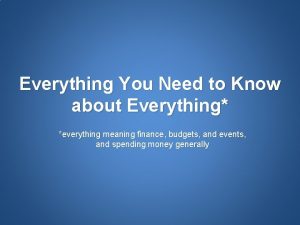EMPLOYMENT UNEMPLOYMENT Everything you need to know CATEGORIES






- Slides: 6

EMPLOYMENT UNEMPLOYMENT Everything you need to know.

CATEGORIES OF EMPLOYMENT • Employees • The self-employed • Unpaid family workers • Participants in government-funded training schemes

The employment rate EMPLOYMEN T RATE • The LFS defines the working age employment rate as the proportion of the working-age population who are in employment. The working age population includes men aged 16 -64 and women aged 16 -59. With the onset of the global recession in 2008 (the 'Great Recession'), the employment rate fell, and continued falling during 2009, to reach a low point of 70. 1 by the end of 2011. Economic growth from 2012 onwards increased the employment rate, reaching a record level of 76. 1% in July 2019.

• The International Labour Organisation (ILO) definition of unemployment is those aged 16 or over are unemployed if they are: • Out of work, want a job, have actively sought work in the last four weeks and are available to start work in the next two weeks. • Out of work, have found a job and are waiting to start it in the next two weeks. Unemployment and the status of the economy can be influenced by a country through for example fiscal policy. Furthermore, the monetary authority of a country like the central bank could influence the availability and cost for money through its monetary policy. UNEMPLOYMENT

• The ILO defines the unemployment rate as the proportion of the economically active people who are unemployed. The economically active are those who are either in employment or unemployed. • The unemployment rate of an individual country is usually calculated and reported on a monthly, quarterly and yearly basis by the National Agency of Statistics. Organisations like the OECD report statistics for all its member states. UNEMPLOYMENT RATE

FULL EMPLOYMENT The full employment of labour has been a key economic objective ever since the mass unemployment experienced in the 1930 s. Clearly, it is not possible to give a simple numerical definition of full employment, other than to say the unemployment rate should be as low as is achievable, and the employment rate as high as is achievable.











